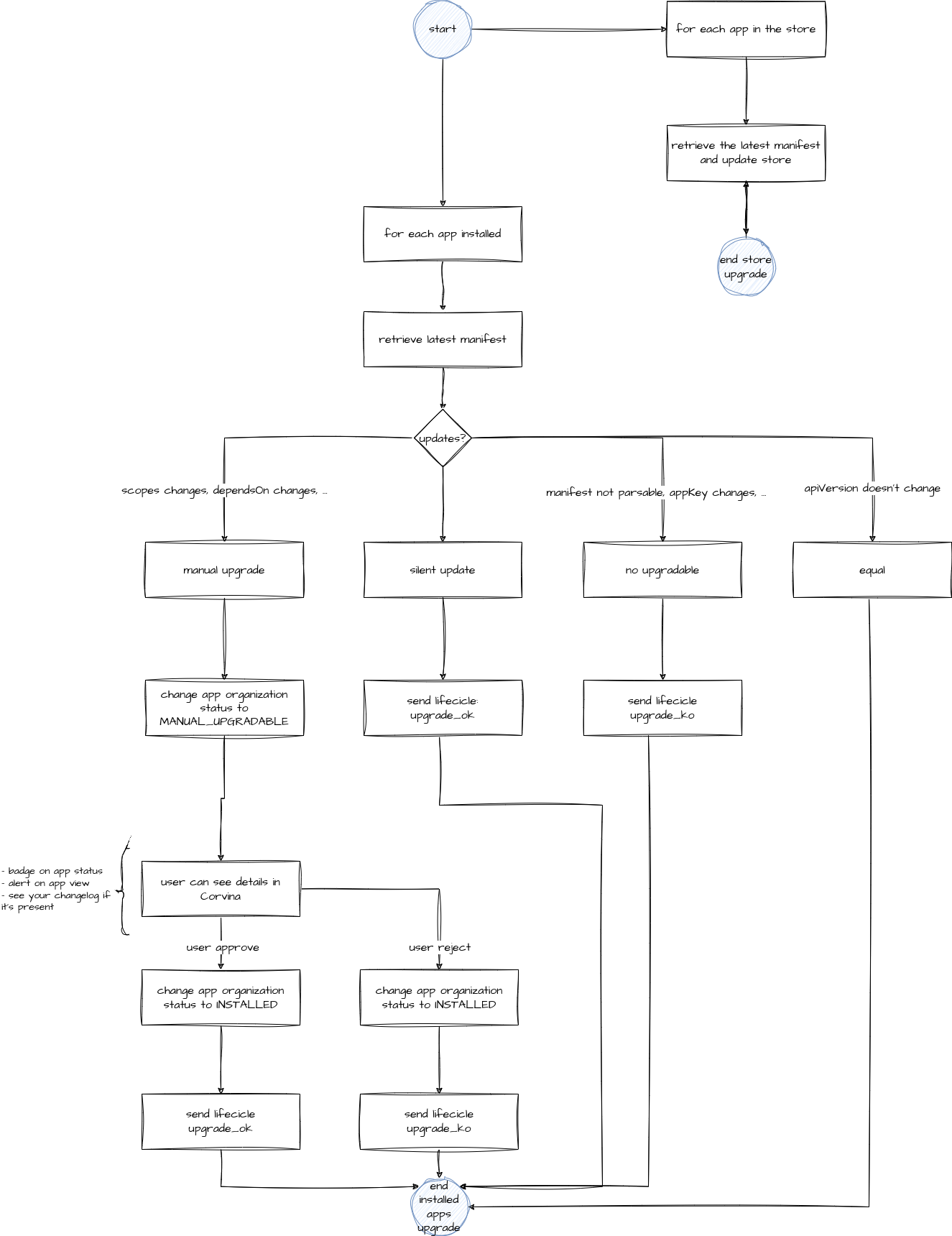Application upgrade
Almost all changes you make to your app will be to code inside your app's web app. For example, tweaking the look of a web panel, adding a configuration option, or catching a previously unhandled exception can all be done by writing and deploying new code to your servers. Users see these changes as soon as you update your web app. It's your cloud app!
In many cases there isn't an immediate reason why end-users should be aware of the change, such as:
- catching an unhandled exception
- change of graphical design
- change description field in the manifest file
In these cases, you can update your app without requiring users interaction. This is called a silent upgrade.
On the other hand, there are changes in manifest.json that require manual user approval. Those changes are:
- change of the
freefield - change of any part in the
scopesfield: if you need more application or device permissions the user must approve the new scopes - change of the
dependsOnfield: if you add a new dependency the user must install the new dependency before upgrading the app - change the major version of the
apiVersionfield: an user may be integrated to your APIs and he may need to change his code to adapt to the new version
In these cases, you can update your app only after the user has approved the changes. This is called a manual upgrade.
Upgrades flow
Every X hours, we poll your app manifest file to check if there are new versions of your app. We are able to detect new versions by comparing the apiVersion field in the manifest file and the structure of the file.
This is the flow of an upgrade:
